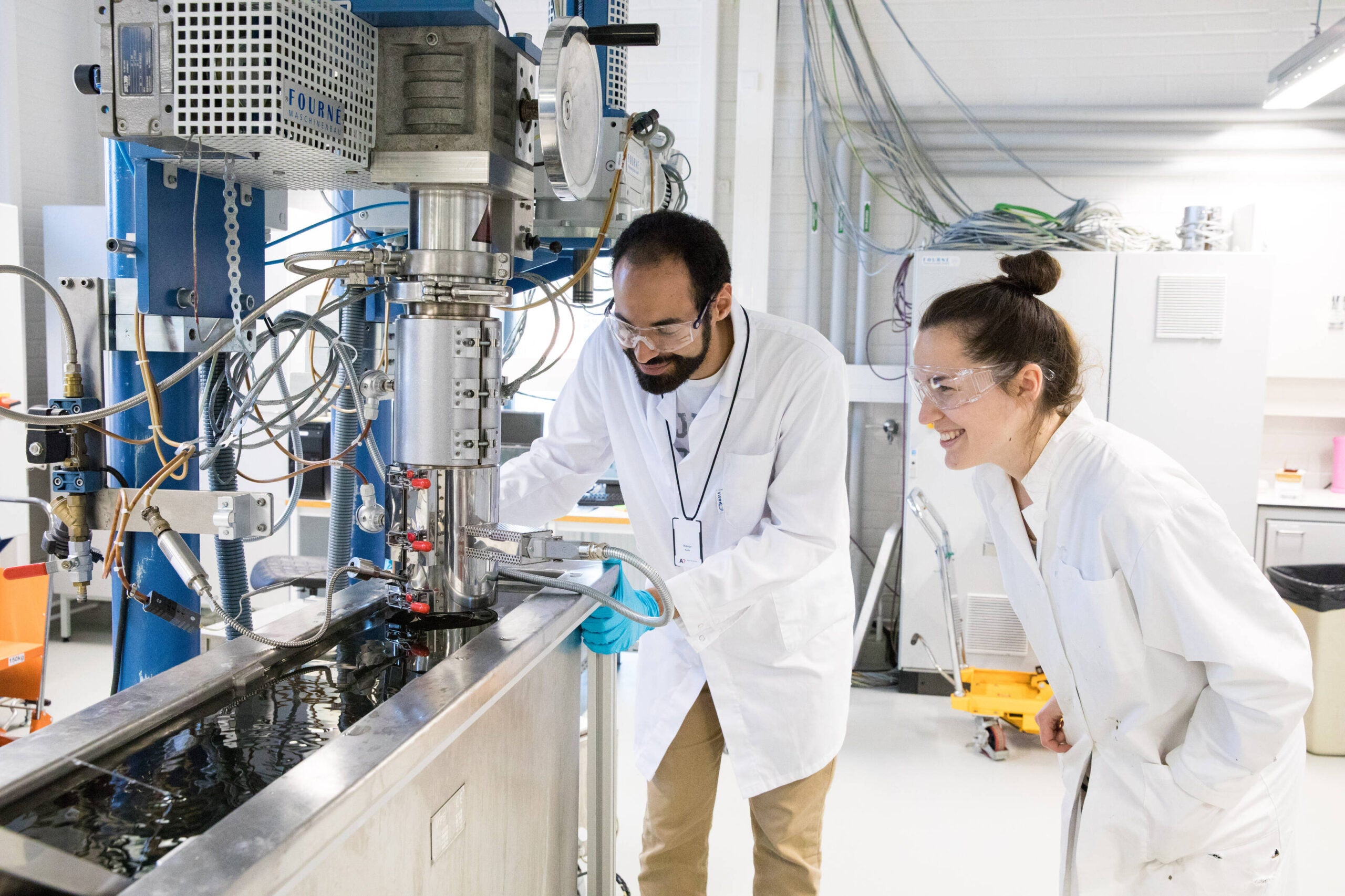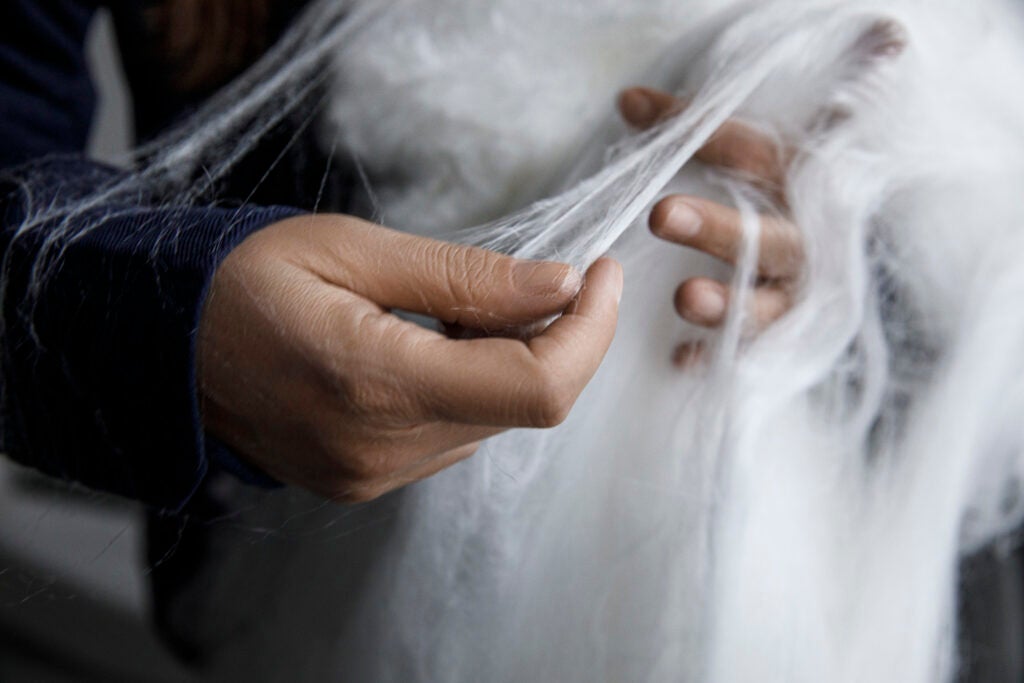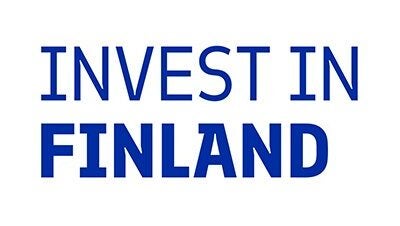
Natural resources, a strong education system and world-class research capabilities have combined to make Finland a world leader in biomaterial development. While the country’s vast swathes of forest, which make up 86% of Finland’s land area, provide the mainstay of its bioeconomy industry, the country has established itself as a world-leading incubator for an array of bio-based production and partnerships.
“Our national bioeconomy and energy and climate strategies, as well as the world’s first circular economy road map, facilitate continuous growth and renewal of the forestry industry,” explains Juha Peltomäki, head of bio & circular industry at Invest in Finland. “Finland’s 2025 vision is that sustainable bioeconomy solutions will form the basis of welfare and competitiveness.”
At the centre of many of these efforts is the Technical Research Centre of Finland, VTT, a not-for-profit enterprise where 2,100 scientists spend their days conducting groundbreaking experimental research into everything from plant biotechnology to smart packaging solutions.
Focused on reducing the environmental footprint of bio-based materials and generating higher value from Finland’s natural bounty, VTT’s biotechnology arm is doing its part to deliver Finland’s transition to a circular economy. All the biomaterial innovations developed for its domestic and international partners are either recyclable, biodegradable, reusable, or a combination of the three.
Textile innovations
VTT’s immense contribution to Finland’s textile industry demonstrates its commitment to developing closed-loop systems.
One spin-off company from VTT – Spinnova – developed a patented technology that allows wood pulp to be spun into textile fibre without chemical processing. The idea came in 2009, when a cellulose expert at VTT, Juha Salmela, was pointed to the similarities between nanocellulose and a spider web’s protein, resulting in his idea to spin wood fibre into textile fibre. The company is now listed on the Helsinki Stock Exchange and is building a production facility in Finland jointly with the Brazilian pulp giant Suzano, involving a total investment of some €50m ($56.7m).

Another, Infinited Fiber, takes piles of cellulose-rich waste that would otherwise be landfilled or burned – including old textiles – and transforms them into premium-quality superfibres for the textile industry.
However, innovation applies to old as well as new. In November, Finland opened the largest textile recycling centre in the Nordics, with an annual recycling capacity of 12 million kilos. Building on this project, VTT ultimately hopes to create the capability for textiles to be recycled in such a way that natural fibres, such as cotton or wool, are dealt with separately from plastic polymers.
“Textiles typically contain many oil-based polymers, which are in principle plastic,” explains Atte Virtanen, VP of biomaterial processing and products at VTT. “We are now putting more of our focus on how we can get even more out of textile recycling, so valuable polymers and monomers are kept in the plastic loop.”Collaborative approach
Virtanen joined VTT in August after many years as a customer, and while he was always impressed with the organisation’s capabilities – even more so now he is a part of it – he believes Finland has been able to carve out its leading position within the global biomaterials arena due to its collaborative approach.
“These things are not done by one organisation on their own,” he stresses. “Finland has strong university education, which constantly generates new talents, who either go into industry, start doing fundamental research at university or come to VTT.
“We also have the right type of funding elements in place, which are sizeable in terms of impact but also allow us to treat research like running a marathon rather than taking a sprint. When you look at VTT closely, it is the sum of many individual projects, which support our journey. By running such a broad range of interesting projects, which are all generating new scientific results. The organisation is renewing all the time in terms of know-how.”
Serving the industry in the right way
The most rewarding moments for Virtanen and his colleagues come when their products have been through the laboratory, the pilot and the industrial trials, and finally make it to market. “That is when you can say, we have taken a leap and made the right impact,” he smiles.

A significant and growing number of foreign enterprises come to VTT to get this process under way because of its scientists’ unique understanding of the properties of biomaterials such as cellulose. The organisation is seeing a notable number of requests from packaging companies interested in new types of sustainable barrier solutions, for example, and from global pulp producers looking to generate new applications using wood-based pulp.
“International companies are warmly welcomed to explore the solutions Finland offers as forerunner of the biomaterial development, to grow their business in sustainable way,” says Peltomäki of Invest in Finland.
The first step of any potential partner relationship is to define the challenge. Then, after agreeing on a clear scope, timeline and budget, it is important to maintain dialogue and trust between the two parties.
“It doesn’t work that the challenge is thrown out to research companies and the company just waits for a solution,” Virtanen stresses. “The key to success is constant dialogue around how we start resolving the challenge together, and the company has a very important role of challenging and guiding the work which is done and executed by the research company.”
It can be difficult to appreciate the sheer amount of progress that has been made in a particular field when you are inside it. “You start feeling that this is all sort of obvious,” Virtanen admits. “It is when you zoom out that you realise it is not obvious at all.
“When I started at university, we didn’t talk at all about making textile fibres out of wood or making cellulose films. A huge amount of progress has been made in the last ten years and I truly believe that a lot of positive things will happen in the next ten to 20 years. This is a fantastic time to be in this industry and to conduct R&D. As researchers, it is our responsibility to deliver and serve the industry in the right way.”
It seems the industry, and international investors, are increasingly appreciating such efforts.



